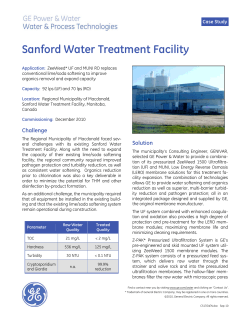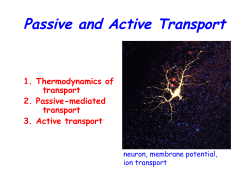
What is FC - Cubic
1 What is FC-Cubic December 2007 National Institute of Advanced Industrial Science and Technology FC-Cubic Polymer Electrolyte Fuel Cell Cutting-Edge Research Center Hiroshi HASEGAWA, Director Shintaro SEKIGUCHI, Deputy Director 2 About FC-Cubic Current Activity of Catalysts and Supports Í Catalyst Team Current Activity of Electrolyte Membranes Í Electrolyte Membrane Team Current Activity of MEAs and GDL/MPL Í Material Transfer at Interface Team History of FC-Cubic 3 FC-Cubic was established in April 2005 as a research center of AIST through strong demands from industries and a proposal by the ANRE of METI. METI: Ministry of Economy, Trade and Industry (Japanese Government) ANRE: Agency for Natural Resources and Energy AIST: National Institute of Advanced Industrial Science and Technology Targets of Research for FC-Cubic FC-Cubic studies phenomena and mechanisms of electrochemical reaction, of material transportation in PEFC by using latest scientific methods 4 Location of FC-Cubic 5 FC-Cubic is located at AIST Tokyo Waterfront Research Base 6 The View of AIST Tokyo Water-front Research Base Main Building 7 AIST Statistics $800 Million annual operating budget 3,200 employees 2,500 Researchers 700 Administrative staff 5,300 visiting researchers 2,510,000m22 (620 acres) controlled area 771,000m22 (8,300,000 ft22) total floor area The The Photo Photo of of “Tsukuba “Tsukuba Center” Center” 8 FC-Cubic Statistics $9 Million annual operating budget 28 employees 2,500 Researchers 5 Administrative staff 10 visiting researchers 1,000m22 floor area The The photo photo of of “AIST “AIST Tokyo Tokyo Water Water front front Research Research Base” Base” 9 Principal Assignment to FC-Cubic • Catalyst Innovative upgrading of Catalyst and Support on performance and cost-potentiality • Membrane Innovative upgrading of Electrolyte Membrane on performance and cost-potentiality • Mass Transfer in MEA Analysis of phenomena on mass transfer through multi-layers in MEA Organization chart of FC-Cubic Director Deputy Director Deputy Director Admi. Manager Secretary Assistant Catalyst Team Leader Ichizo Yagi Researchers 7 people Hiroshi Hasegawa Shintaro Sekiguchi Satoru Kobayashi Kazuya Uotani 2 people 3 people 10 Emeritus Advisor Kazuhiko Shinohara Yu Morimoto Makoto Murata Material Transfer at Interface Team Electrolyte Membrane Team Leader Satoru Kobayashi Researchers 4 people Leader Akihiro Ohira Researchers 5 people Collaborative Researcher 3 people Intern 5 people External Relationship, Budget and Facilities of FC-Cubic 11 $9 Million annual budget 28 employees + 10 visitors 1,000m2 floor space Instruments, Facilities FT-IR, Raman Spectroscopy, SAXS, XPS, SEM, SPM, GC/MS, LC/MS, IC, DSC, TG, NMR Temperature Programmed Desorption Analyzer Water Vapor Adsorption Apparatus Porosimeter, Fuel Cell Testing Stand Clean Room (Class 10,000) Sum Frequency Generation Spectroscopy (SFG) Surface Enhanced IR Absorption Spectroscopy (SEIRAS) Surface Enhanced Raman Spectroscopy (SERS) Gas Permeability Measuring Instrument Contact Angle Measuring Instrument in situ measurement/observation Technical Collaboration Contract World wide Industries, Universities, Scientific Institute SAXS (Small angle X-ray scattering) in situ measurement Î under the condition of controlled temperature and humidity 12 Fuel Cell Testing Stand Clean Room (Class 10,000) 13 14 Gas Permeability Measuring Instrument under Pressure 15 16 Current Activities of Catalysts and Supports Catalyst Team Team Leader: Dr. Ichizo Yagi 17 Research Theme •Kinetic analysis of electrochemical reaction at catalyst surfaces, mainly at cathode catalyst. •Material design for catalysts, supports and their interaction. ÎStructural design under nano- and meso-scale ÎElectronic structure design of catalyst and supports Reaction Mechanism Investigation on Oxygen Reduction Reaction (ORR) Cathode Reaction: O2 + 4H+ + 4e- H2O Multielectron & Multiproton Transfer occurs…. Surface concentration of adsorbate IRAS, Raman, SFG, …. Surface morphology of electrode surface STM, SXS, … Energy structure of electrode surface should be followed in situ. XAS, Electroreflectance, SHG,… Surface Enhanced Vibrational Spectroscopies (in aqueous solutions) are promised! 18 SEIRAS 19 (Surface Enhanced Infra-red Absorption Spectroscopy) Observed behavior of water and sulfate anion at the surfaces in Ar saturated solutions were identical to those in the literatures. References: 1. K. Ataka, T. Yotsuyanagi, M. Osawa, J. Phys. Chem. 100 (1996) 10664. 2. K. Ataka, M. Osawa, Langmuir 14 (1998) 951. New Type Carbon Support 20 Microporous Layer Polymer Electrolyte Typical Catalyst Layer Catalyst Supports provide transfer paths of: 1. Electron (via carbon contacts) 2. Gas (via inter-particles macropores) 3. Water (via inter-particles macropores) 4. Proton (via ionomers in macropores) To provide stable mass transfer, pore size and structure should be controlled. 2∼50 nm Mesoporous Carbon Rigid & regular mass transfer route via intraparticle mesopores 21 Current Activities of Electrolyte Membrane Electrolyte Membrane Team Team Leader: Dr. Akihiro Ohira 22 Research Fields Physical property Polymer structure Physical properties Morphology (surface/bulk) SO3 H Proton conductivity Water uptake X SO3 H Gas barrier/permeability Chemical structure Structure observation DSC (Nature of water) DMA (Elastic property) Elastic (mechanical) property Thermal property Chemical stability conformation Proton, Gas Diffusion Water behavior Polymer dynamics (Time, space) Reactivity -Generation of by-product-Diffusion of by-product- Molecular weight Ion exchange capacity Cristalinity (Hydrophilic/phobic/ion cluster) Water uptake Proton conductivity SPM(AFM) (Surface property) Phenomena in PEFC X-ray diffraction (Bulk structure) Gas Permeability Phenomena Confocal Laser Microscopy (Bulk structure) NMR (Proton,gas diffusion Molecular weight Water behavior, Ion exchange Polymer dynamics) capacity Cristalinity Chromatography/ Light Scattering (Chemical stability) SO3 H X SO3 H Preparation of model polymer 23 Research Theme •Analysis of relations between the morphology and properties. (proton conductivity, gas permeability etc.) •Analysis of phenomena of water in membrane •Material design for electrolyte membrane and ionomer Scanning Probe Microscopy (SPM) Observation of surface morphology Under controlled temperature and humidity 25∼95oC, dry∼90% Repulsive and/or attractive force between surface and cantilever Cantilever surface Z direction 24 Direct observation of water pool at surface by SPM Perfluorinated membrane 40%RH Phase image 80%RH Water pool with high connectivity 20 nm 25 5 nm 5nm 20 nm ・Succeeded in the imaging under controlled temperature & humidity Hydrocarbon membrane 40%RH 80%RH Water pool with low connectivity 20 nm ・Achievement of high resolution imaging (<5nm) by phase mode 20 nm Direct observation of water pool in membrane by SPM Morphology change of nafion® under controlled humidity (a) dry (a) dry100x100nm 100x100nm (b) (b)wet wet 100x100nm 100x100nm left: phase image, right: height image; wet 15nm 10nm (c) dry (c) dry500x500nm 500x500nm (d) wet (d) wet500x500nm 500x500nm 13.8nm 5nm Intensity 3.5∼4nm SAXS height image only height image only Dark spot(hydrophilic domain): continuous channel with 3.5-4 nm size Bright spot(hydrophobic) : crystal region of PTFE main chain with 15 nm size 70%RH 20%RH angle 26 27 Current Activities of MEAs and GDL/MPL Material Transfer at Interface Team Team Leader: Dr. Satoru Kobayashi Senior Researcher: Dr. Chiaki Ishii Research Theme •Analysis of water behaviors in catalysis layer and gas diffusion layer. •Analysis of gas diffusion behaviors in catalysis layer and gas diffusion layer. •Analysis of thermal and electrical conductions in catalysis layer and gas diffusion layer. 28 Surface property (contact angle) of GDL 29 Hydrophobic property (contact angle) is under influence of water dropletsize Pore size distribution of GDL/MPL Heat vaporization of water 45.01 kJ/mol (0degreeC, 1atm) 40.61 kJ/mol(100degreeC,1atm) 100µm Hv is close to the heat vaporization of water Adsorbed water is “liquidlike state” on MPL 30 Contact Information Mr. Shintaro Sekiguchi Deputy Director shintaro-sekiguch@aist.go.jp +81-3-3599-8568 http://www.aist.go.jp/fc3/ 31
© Copyright 2025





















